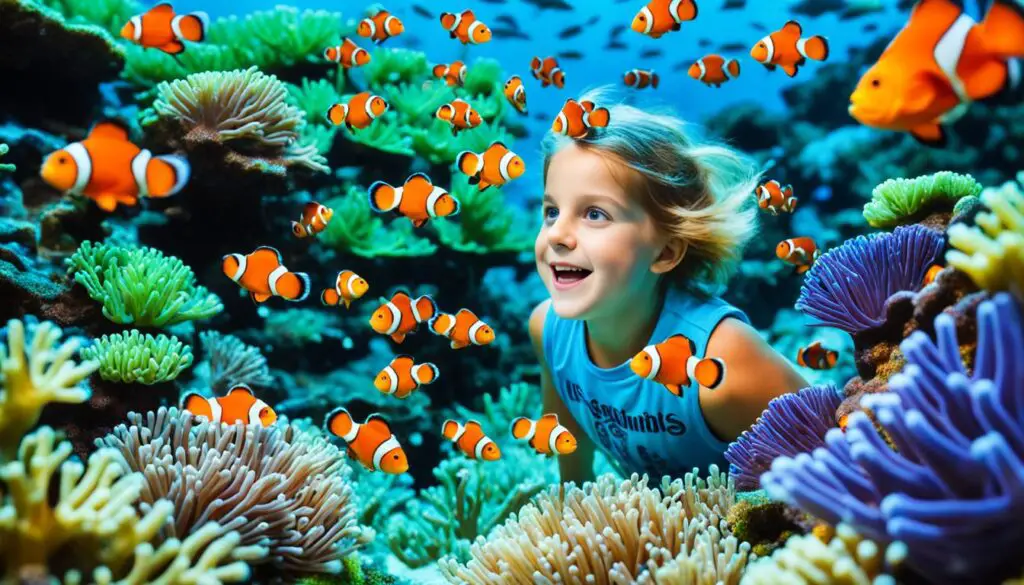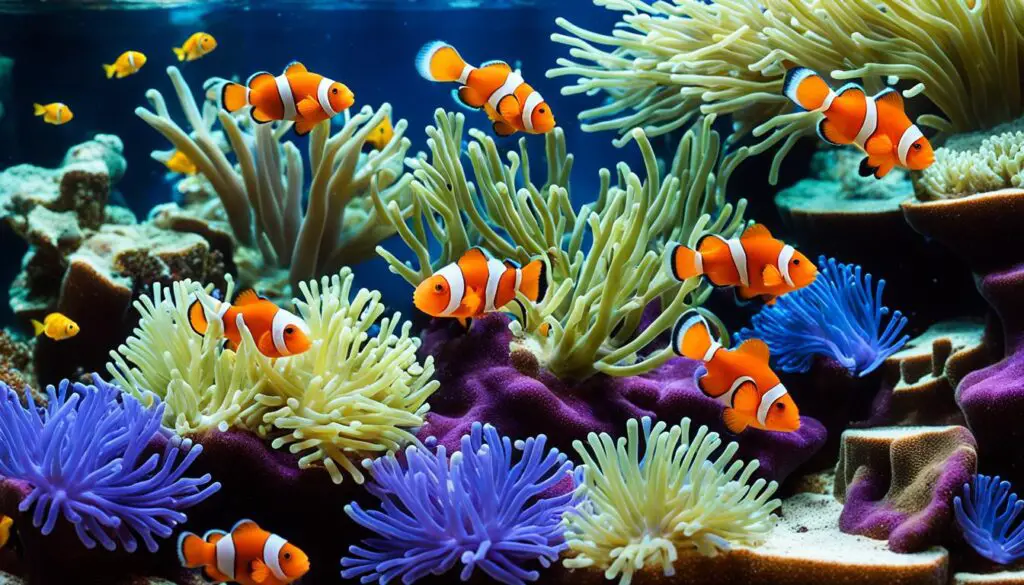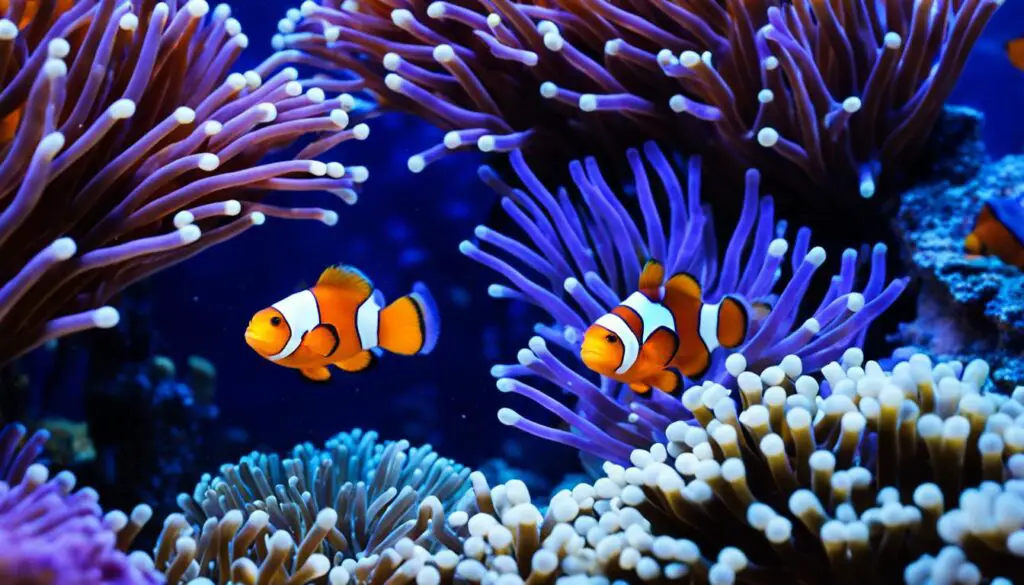Coral Reef Preservation Efforts: Preserving Precious Ecosystems
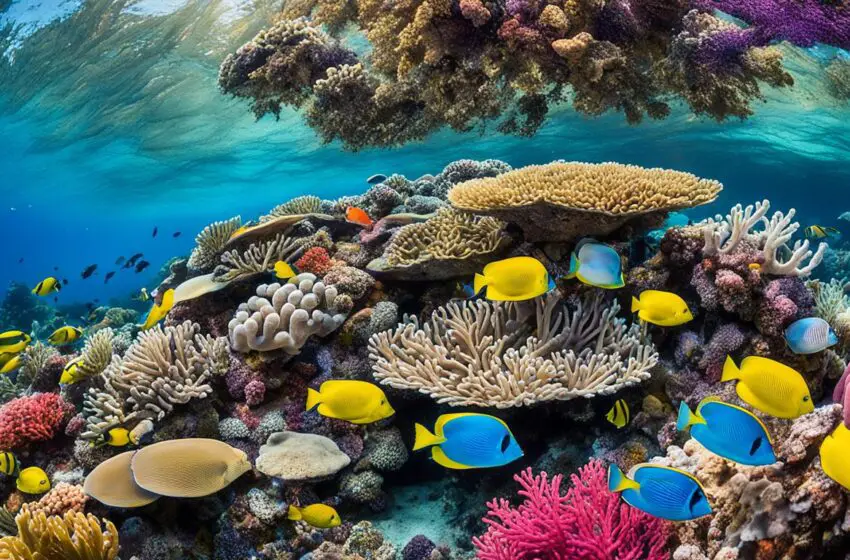
Hello, everyone who loves nature! I’m here to talk about how important it is to save coral reefs. These amazing places do a lot for our world and for us.
Coral reefs are worth billions because they help both nature and us. They are key for many different species and cultures. However, over 60% of coral reefs are in danger due to pollution and bad fishing. Add climate change, and 75% of them are at risk. We must act fast!
The NOAA Coral Reef Conservation Program, started in 2000, leads the way in saving coral reefs. It aims to make them stronger against climate change, reduce pollution, help fisheries, and grow more corals. This joined effort with others fights threats together.
Let’s look at why watching and studying coral reefs is so important. NOAA’s research helps us understand coral bleaching and measures sea temperatures. These insights help in saving these beautiful places.
So, are you interested in this journey with me? We’ll learn how vital it is to preserve coral reefs and the amazing effort being made to protect them.
Key Takeaways:
- Coral reefs are highly valuable ecosystems, providing billions of dollars in goods and services.
- Over 60% of the world’s coral reefs are under threat from various stressors.
- The NOAA Coral Reef Conservation Program focuses on protecting and restoring coral reef ecosystems.
- Coral reef monitoring and research are crucial for understanding and mitigating threats.
- Collaboration with organizations and institutions is vital in addressing coral reef conservation challenges.
The Importance of Coral Reef Monitoring and Research
Coral reefs are crucial ecosystems facing many threats. These include pollution, invasive species, diseases, coral bleaching, and climate change. It’s vital to focus on monitoring and researching coral reefs to protect them.
Coral reef monitoring is key to grasping their health and changes. Scientists gather data on various indicators to check reef conditions. This lets us follow changes and see if our conservation actions work. It also helps us spot and tackle threats like coral bleaching due to warm water.
NOAA’s Coral Reef Watch provides the only global early-warning system for coral bleaching events. Utilizing remote sensing, modeling, and on-site data, they study coral reef ecosystems worldwide, contributing to our understanding of these fragile environments.
Furthermore, research boosts our coral reef knowledge and guides conservation methods. For instance, studying coral bleaching helps experts come up with ways to lessen its impact. Thanks to modern tools like satellites and GPS, we can closely watch reefs and sea temperatures.
To save coral reefs, creating marine protected areas is vital. These places protect reefs from harmful human actions. They do this by controlling fishing and encouraging sustainable tourism, thus ensuring reef and biodiversity survival.
Let’s examine the National Coral Reef Monitoring Program by NOAA to highlight the key role of monitoring and research. This program tracks many indicators to understand US coral reefs, climate change effects, pollution, and other dangers. It provides important insights into the health and resilience of these ecosystems through different data types.
| Importance of Coral Reef Monitoring and Research | Benefits |
|---|---|
| 1. Comprehensive data collection | Provides insights into the condition and health of coral reefs |
| 2. Early-warning system for coral bleaching events | Helps detect and respond to threats in a timely manner |
| 3. Improved understanding of coral reef dynamics | Enhances conservation efforts and mitigation strategies |
| 4. Mapping and monitoring using advanced technologies | Enables detailed assessment of reef habitats and environmental conditions |
| 5. Marine protected areas | Preserves coral reefs and ensures their long-term survival |
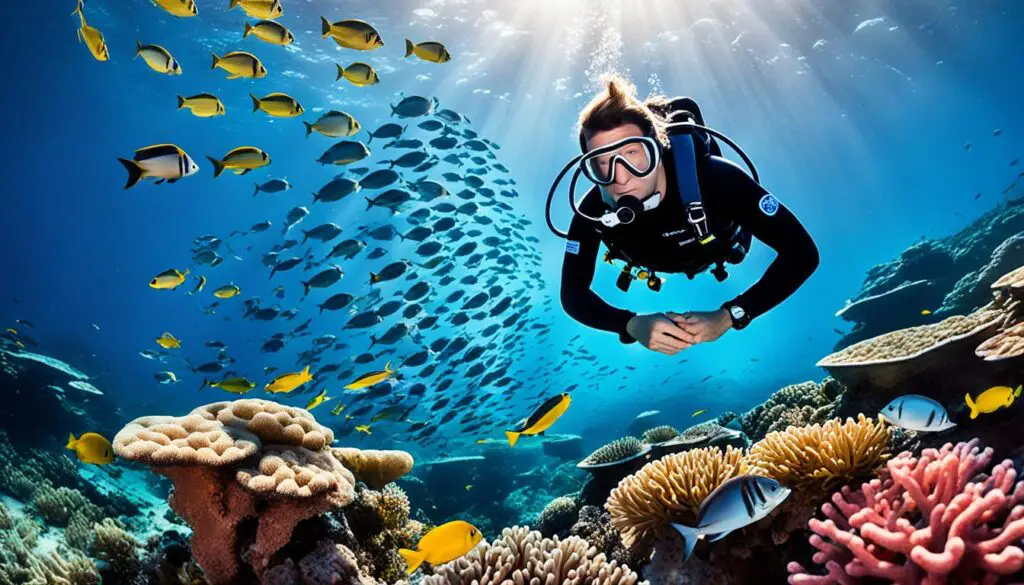
The U.S. National Coral Reef Action Strategy
The U.S. Coral Reef Task Force started its work in 1998. It leads the charge in keeping coral reef areas safe. It teams up with different groups like government bodies, NGOs, scientists, and businesses to protect these crucial ocean habitats.
Our National Action Plan wants to save coral reefs from threats. We do this in a few ways. First, we learn more about coral reefs. Then, we try to lessen how much we hurt them by our actions. And we make sure everyone is working together to keep reefs healthy.
The USCRTF is key in making these plans happen. We focus on several key things. We map and keep an eye on coral reef areas. We look into what’s making them get worse. We try to stop activities that harm the environment. And we encourage looking after and wisely using coral reefs.
We meet regularly to see how we’re doing and think of next steps. The U.S. National Coral Reef Action Strategy lays out our 13 big goals. These goals guide us in different tasks. We work on mapping reef areas, checking them over time, helping with research, lessening our harm, fixing reefs that are hurt, and teaching people about these vital places.
FAQ
What are the main threats to coral reefs?
Coral reefs are in danger from various threats. These include pollution, invasive species, diseases, and bleaching. Climate change is also a big threat.
How does NOAA Coral Reef Watch monitor coral bleaching?
NOAA’s Coral Reef Watch is the global early-warning system for coral bleaching. They study reefs using remote sensing, modeling, and data on the ground.
What is the goal of the National Coral Reef Monitoring Program?
The National Coral Reef Monitoring Program gathers data on many things. It looks at the biological, climatic, and socioeconomic aspects of US coral reefs.
How does NOAA utilize advanced technology to monitor coral reefs?
NOAA uses satellite imagery and GPS to track reefs. This helps them spot harmful algal blooms and monitor sea temperatures.
What is the role of marine protected areas in coral reef preservation?
Marine protected areas are key to saving coral reefs. They shield them from human harm. This helps keep coral ecosystems alive.
What is the U.S. Coral Reef Task Force?
The U.S. Coral Reef Task Force started in 1998. It leads the drive to protect and save coral reefs. It partners with many groups.
What is the National Action Plan to Conserve Coral Reefs?
The National Action Plan to Conserve Coral Reefs tackles reef challenges. It aims to understand, reduce harm, and strengthen conservation efforts.
What is the role of the U.S. Coral Reef Task Force?
The U.S. Coral Reef Task Force helps carry out the National Action Plan. They focus on mapping reefs, stopping damage, and supporting conservation.
How does the USCRTF collaborate on conservation initiatives?
They meet often to check progress, suggest new steps, and join forces on conservation work.
What actions are covered by the U.S. National Coral Reef Action Strategy?
The Action Strategy lists 13 goals. It covers many actions, like mapping habitats, long-term monitoring, research, impact reduction, reef restoration, and education.

